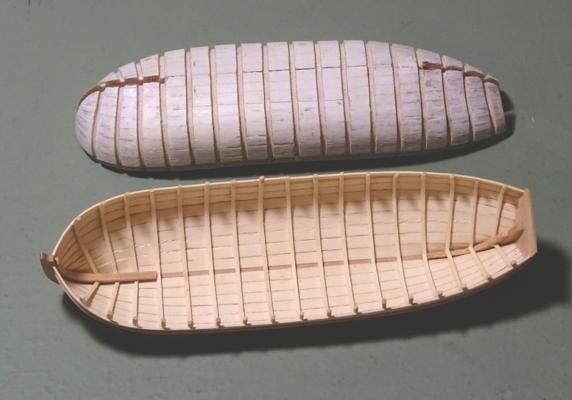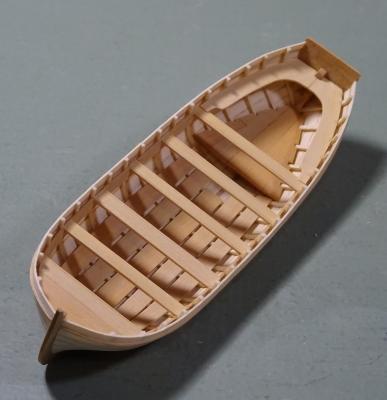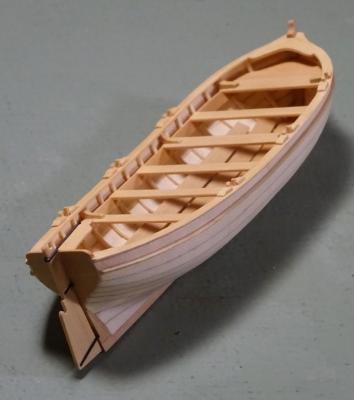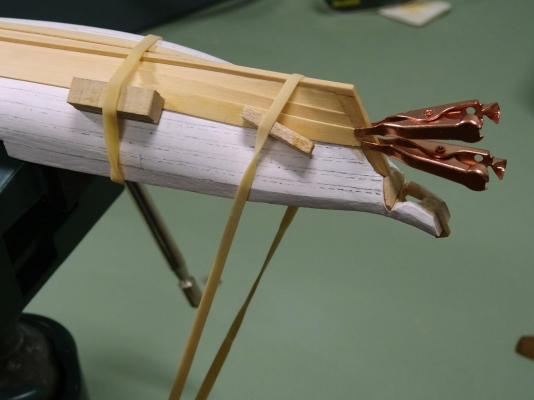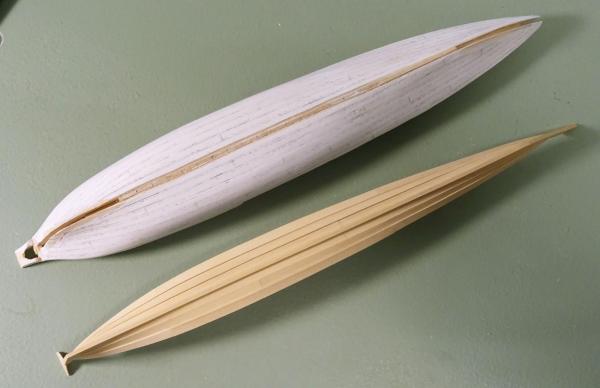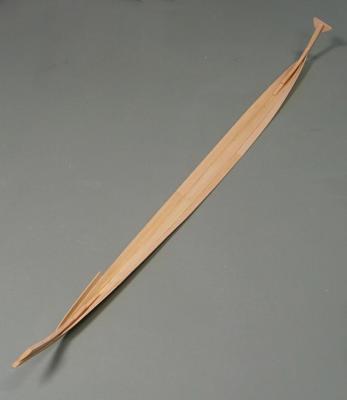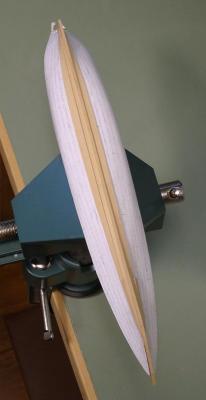-
Posts
13,347 -
Joined
-
Last visited
Content Type
Profiles
Forums
Gallery
Events
Everything posted by druxey
-

Frégate d'18 par Sané , la Cornélie
druxey replied to JohnE's topic in CAD and 3D Modelling/Drafting Plans with Software
Better and better each time, John. If you are offering plans, I imagine 1:48 and 1:72 would be popular. For those with limited space, 1:96 as well? Apart from a general lines plan, folk might want profile (internal deck arrangements), lofted frames, and deck plans. The really ambitious will hope to see masts, spars and rigging plans as well, if you want to go there. -
Wood will move where it wants to go. Start with a really straight-grained piece from which to cut your keel. It will need to be pinned in some way to your plug. This will keep it straight until your garboard strakes are fitted to it, giving everything a 'T' section assembly that will help maintain straightness.
-
A thought, Steven: put in every other frame on the plug, then bend in the alternate ones after the shell comes off the plug. Would that make life easier? Thanks for the compliment. Speaking of lightly built, the hospital barge is 37' 0" long with a keel 3" square before the rabbet is taken out and the frames will be a mere ¾" square.
- 641 replies
-
- greenwich hospital
- barge
-
(and 1 more)
Tagged with:
-
Five strakes a side are completed now. Note that I had to pare back the extreme ends of the plug so that the planks would run smoothly into the rabbet fore and aft. With this hull form the spiled planks are only slightly curved, except at the stern.
- 641 replies
-
- greenwich hospital
- barge
-
(and 1 more)
Tagged with:
-

Gluing planking
druxey replied to DocBlake's topic in Building, Framing, Planking and plating a ships hull and deck
I'm with Chuck. No stress on the plank, no stress on you! -
Dick: I had no trouble planking with the frames recessed in the plug when the plug was well waxed.
-
Steven: see my comments in my Greenwich Hospital barge log. With carvel planking, edge glued planks will not hold together as they do in a clinker build! There is insufficient gluing area for this. You'll also need to devise some method to stabilize the thin keel to keep it straight until the planking is on.
-
Thanks, everyone, for your comments. Steven: I've used this method with carvel construction, but with one difference: frames first. You can either file grooves in the plug for the frames and bend them in, or form the plug to inside of frame. I use the first method. In both cases the plug is made deeper and extends above the sheer line. (You can see this set back area in shadow in the photograph.) This area is used to spot-glue the frames to. Just make sure everything is well waxed to prevent sticking! The boat looks a little rough when first taken off the plug, but cleans up nicely as you can see.
- 641 replies
-
- greenwich hospital
- barge
-
(and 1 more)
Tagged with:
-

Frégate d'18 par Sané , la Cornélie
druxey replied to JohnE's topic in CAD and 3D Modelling/Drafting Plans with Software
Looking more and more respectable each time, John. Bien fait, monsieur! -

HMS Naiad 1797 by albert - FINISHED - 1/48
druxey replied to albert's topic in - Build logs for subjects built 1751 - 1800
Superb work, Albert. Keep those progress photos coming! -
Three strakes a side completed now. Rubber bands and small soldering clips make fine hold-downs while roughly shaped planks are drying out.
- 641 replies
-
- greenwich hospital
- barge
-
(and 1 more)
Tagged with:
-
Thank you, Mark! Jim: the strength of the assembly at this stage is surprising, even though the individual parts are so flimsy. If the planks are cut accurately so that there is no stress in the hull, it will not distort. In past experience, sometimes the breadth will expand slightly when the shell is complete, but this is easily corrected when the internal elements are added, producing a very strong model indeed. The barge I'm modelling is not the Prince Frederick's one in Mark's photos: this one, while similar, has far less carved work. However, it will be a lot of fun to do when I get there!
- 641 replies
-
- greenwich hospital
- barge
-
(and 1 more)
Tagged with:
-
Nice details, Mark. Thank you. The carved works are wonderfully executed. The rowing benches on these barges do have a central element to them. The items I'm particularly interested in are the standards supporting the ends of the thwarts and whether there are also supporting standards above the transom. These cannot be seen on the usual photographs of the barge.
- 641 replies
-
- greenwich hospital
- barge
-
(and 1 more)
Tagged with:
-
The second strake is in on the port side. One can see the gain at the bow and stern, as well as how the boat keeps its shape when taken off the plug. From here on it is simply a matter of spiling and shaping each plank as I work up (down!) to the sheer strake. All one need do is make sure to conform to the mark-out on the plug.
- 641 replies
-
- greenwich hospital
- barge
-
(and 1 more)
Tagged with:
-

Frégate d'18 par Sané , la Cornélie
druxey replied to JohnE's topic in CAD and 3D Modelling/Drafting Plans with Software
Only switch from x if there is compelling and overwhelming evidence from y! That set of lines looks very nice, John.
About us
Modelshipworld - Advancing Ship Modeling through Research
SSL Secured
Your security is important for us so this Website is SSL-Secured
NRG Mailing Address
Nautical Research Guild
237 South Lincoln Street
Westmont IL, 60559-1917
Model Ship World ® and the MSW logo are Registered Trademarks, and belong to the Nautical Research Guild (United States Patent and Trademark Office: No. 6,929,264 & No. 6,929,274, registered Dec. 20, 2022)
Helpful Links
About the NRG
If you enjoy building ship models that are historically accurate as well as beautiful, then The Nautical Research Guild (NRG) is just right for you.
The Guild is a non-profit educational organization whose mission is to “Advance Ship Modeling Through Research”. We provide support to our members in their efforts to raise the quality of their model ships.
The Nautical Research Guild has published our world-renowned quarterly magazine, The Nautical Research Journal, since 1955. The pages of the Journal are full of articles by accomplished ship modelers who show you how they create those exquisite details on their models, and by maritime historians who show you the correct details to build. The Journal is available in both print and digital editions. Go to the NRG web site (www.thenrg.org) to download a complimentary digital copy of the Journal. The NRG also publishes plan sets, books and compilations of back issues of the Journal and the former Ships in Scale and Model Ship Builder magazines.





